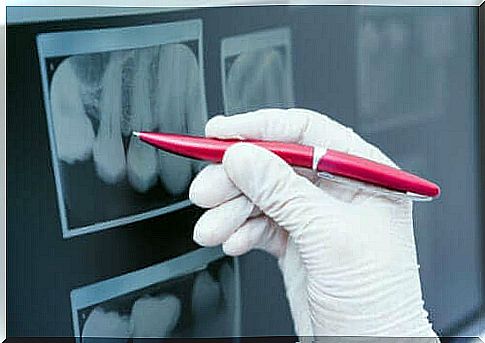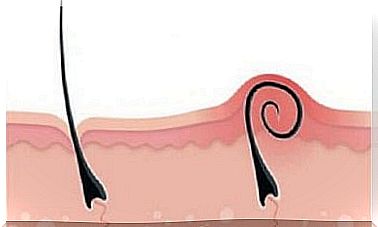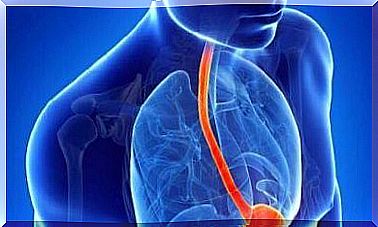What Is Enamel Hypoplasia And How Is It Treated?

Enamel hypoplasia is the weakening of this important protective layer on the teeth. This change in the enamel layer of the teeth can cause many problems in people who suffer from this.
Tooth enamel is the most superficial and outer layer of the teeth and consists mainly of minerals. It is made of a group of calcium crystals called hydroxyapatite, which is the hardest and most resistant material in the body. Its main function is to cover and protect the teeth.
If this structure is not properly constructed or is weakened, you may have enamel hypoplasia. In this article we will tell you what this dental change means, why it occurs and what complications it can cause. We also tell you what to do if you suffer from this condition.
What is enamel hypoplasia?
Enamel hypoplasia is a condition of the enamel layer associated with improper development. In general, it appears during the formation of the tooth. The result is a tooth with an enamel deficiency or with a low tissue quality. Sometimes the manifestations of this condition are inconspicuous and almost imperceptible.
In other cases, however, they are very obvious. They can be seen as white spots or dots, streaks, pits, dents, grooves or deterioration in the shape and texture of the teeth.
The surface looks rough and the defects we mentioned above appear brown or yellow. In the most severe cases, there is a total absence of enamel and the teeth are smaller and misshapen.
As we have already mentioned, enamel is responsible for covering and protecting the teeth. If this protective layer is insufficiently thick or damaged, the inner and less hard layers of the tooth can be exposed. This leads to one or more of the following consequences:
- Pain.
- Sensitivity to cold, heat and sweets.
- Increased risk of cavities.
- An ugly looking smile.
Causes and Related Conditions
It is often difficult to determine the cause of enamel hypoplasia. As we have already told you, the problem arises during the growth and formation of the tooth, but it becomes apparent later when the tooth appears in the mouth.
It is usually due to circumstances or situations that favor its onset and that occur during pregnancy or childhood. Below we will describe some of the conditions that give rise to enamel hypoplasia.
Problems during pregnancy

Our primary teeth begin to form when we are in our mother’s womb. Calcium minerals are deposited and thus form what will be the crown of the future teeth.
Any factor that affects pregnancy can affect enamel development, stopping or slowing its formation. The following factors can cause enamel hypoplasia in the developing baby:
- A maternal disease
- High fever
- Infection during pregnancy (Spanish link)
- Taking certain medications
- drug addiction
- Nutritional Deficiencies
Early Childhood Problems
Just like in the womb, the teeth still form in the first years of life. Any harmful event that occurs during this time can affect the cells that develop the enamel and cause hypoplasia. Harmful situations that can arise in childhood include:
- preterm birth.
- Low birth weight.
- Malnutrition.
- Vitamin deficiency.
- infections.
- System diseases.
- Use of certain drugs (Spanish link).
- Very high fever.
Trauma during childhood is a common cause of enamel hypoplasia. What generally happens is that the blow affects the baby tooth and causes injury to the permanent tooth underneath it through the root.
Heredity
There are some hereditary genetic patterns that affect the formation of the teeth in the mouth. A number of defects then occur in a small area of a single tooth.
However, there can be more severe cases where multiple teeth may be involved. Enamel hypoplasia of genetic origin is often a manifestation of a complex syndrome with other additional signs in the rest of the body.
Other Acquired Causes of Enamel Hypoplasia
Loss of enamel and wear can also result from external factors on tooth surfaces. This reduces the quality and thickness of the glaze, revealing the softer, deeper layers.
And while it’s not a developmental defect like hypoplasia itself, it produces the same changes that characterize this condition. These are some of the factors that can cause this:
- Dental erosion: Exposure of the tooth surface to acidic foods, vinegar, soft drinks and citrus fruits often irreversibly destroys the enamel. Acid reflux and a lot of vomiting can also cause this problem.
- Bruxism: Grinding the teeth wears down the teeth, revealing the inner layers.
- Trauma: Blows to the mouth can cause small lesions, such as cracks in the enamel.
- Very traumatic hygiene habits: Brushing teeth with very fast movements, too much force or bristles that are too hard can often damage the protective enamel.
Available treatments for enamel hypoplasia
Currently, there are several treatment alternatives to resolve the consequences of enamel hypoplasia. The choice of approach depends on each clinical case and depends, among other things, on the degree of tooth tooth involvement and the needs of the patient.
A preliminary evaluation and a thorough examination by a dentist are necessary. Of the available options, we will explain the most common below.
Teeth whitening
This is a useful therapy when enamel hypoplasia presents in the form of white spots. Teeth whitening evens out the shades, achieving a more uniform color of the different teeth.
Thus, by using specific chemicals applied to the tooth surface, it is possible to lighten the color of the teeth. The treatment can take place in the dental practice, at home on the indication of the dentist or by combining both methods.
Micro-abrasion and resin fillings
This is a useful treatment when enamel hypoplasia manifests itself in the form of severe discoloration. It consists of polishing the damaged area of the tooth to completely remove the stain.
The professional should then fill the area with a composite of the same color as the tooth element. In a number of cases, a dentist can perform this treatment with a drill, but sometimes it is not necessary and only hydrochloric acid is needed.
dental sealing
Dental sealing consists of placing a liquid resinous material over the grooves, pits or spots where enamel hypoplasia is present. This material then hardens using a special light. Finally, the professional polishes the area for a better finish.
In general, it is helpful when the imperfections are small and superficial. This protects the tooth and reduces bacterial plaque retention and the risk of cavities in the area.
Veneers or crowns

Your dentist may consider this option for very severe cases, when the affected area is very large. Veneers or crowns can cover very noticeable stains as well as rough surfaces and misshapen teeth. The professional places them on the front part of the tooth. They consist of porcelain or composite.
Crowns, on the other hand, cover the entire tooth, like a cap. In this case, the dentist has to grind the tooth to place the crowns on it, much more than with veneers. They can consist of porcelain, metal and porcelain, or zirconium. Their design takes into account the color, shape and size of the tooth and is made individually for each specific clinical case.
Dental implants or dental bridges
There are rare and extreme cases where it is necessary to use a prosthesis as a solution for enamel hypoplasia. These are those cases where the deterioration is such that very little tooth remains. The best option is to remove and replace it. Depending on the patient’s capabilities and circumstances, an implant or bridge may be used to restore the lost tooth(s).
Enamel Care Recommendations to Prevent Enamel Hypoplasia
Enamel hypoplasia is usually not preventable. However, taking care of your teeth is essential to prevent other pathologies, such as cavities, from developing on top of this defect.
As we have said before, the enamel layer covers and protects the inner tissues of the teeth and, if damaged, it cannot regenerate. So here are some good habits to take care of this all-important layer:
- Food. The consumption of highly acidic, hard foods and foods with a high sugar content should be reduced. So it’s important to reduce your intake of soda, vinegar, cider, and citrus fruits.
- Oral hygiene. Brushing your teeth three times a day with fluoride toothpaste is essential to keep your teeth free of bacterial plaque. The movements should be gentle and ensure that all sides of the teeth are reached. Flossing and mouthwashes are also necessary.
- Visit the dentist regularly. By visiting the dentist every six months, possible problems can be detected and treated in time. Dental cleaning and fluoride treatments protect the enamel.
- Use fluoride. Fluoride gives extra protection to the enamel. Your dentist can prescribe the use of a suitable toothpaste as well as a special fluoride rinse to better care for your teeth.
Conclusion
These basic steps do much more than just protect the enamel on your teeth. You can also prevent many mouth problems and take care of your smile in general. In addition, it will ensure that no unpleasant odors form in the oral cavity.
Now you know what enamel hypoplasia looks like and what to do about it. So if you suspect that you or someone you know has it, it’s best to see your dentist right away. The professional will be the one who will help solve this problem.









